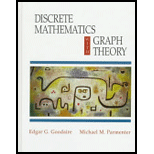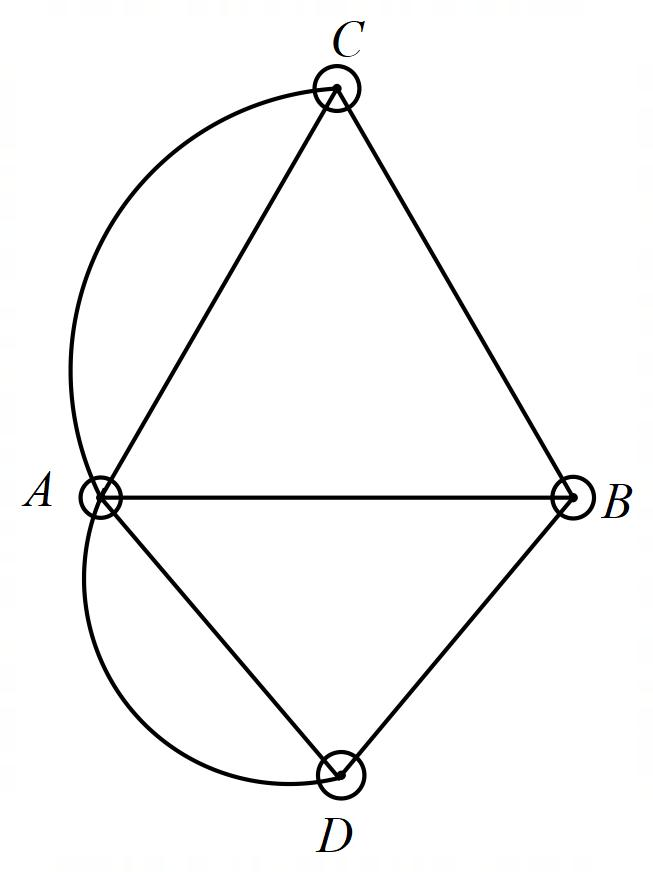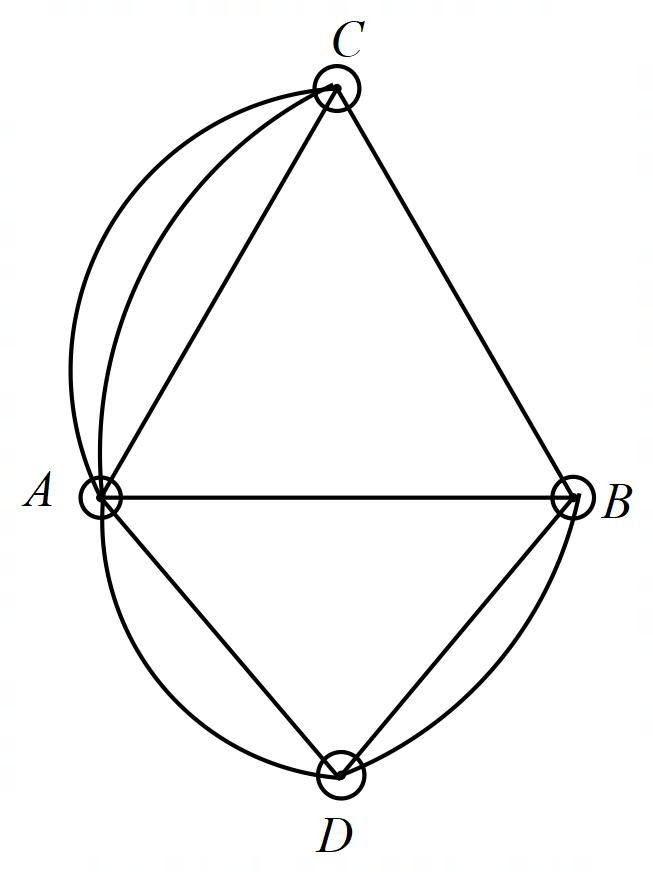
In the Konigsberg Bringe Problem (see fig. 9.1), two new bridges are constructed, one joining A to C and the other B to D. Use Theorem 10.1.4to show that the answer to the question is now yes.
To Prove: The answer to the question is now yes. If in the KonigsbergBringe Problem (see fig. 9.1), two new bridges are constructed, one joining A to C and the other B to D. Use Theorem 10.1.4.
Explanation of Solution
Proof:
The graph of the Konigsberg Bridge Problem is shown as follows:

Now, if we add one path between A and C and another between B and D, the graphical representation of the new problem is as follows.

Now theorem states a pseudo- graph (with at least two vertices) is Eulerian if and only if is connected and every vertex is even.
Since the degree of each vertex is also in the new graph, we can say that the connected pseudo graph is Eulerian.
So, the answer is yes.
Want to see more full solutions like this?
Chapter 10 Solutions
Discrete Mathematics with Graph Theory (Classic Version) (3rd Edition) (Pearson Modern Classics for Advanced Mathematics Series)
 Linear Algebra: A Modern IntroductionAlgebraISBN:9781285463247Author:David PoolePublisher:Cengage Learning
Linear Algebra: A Modern IntroductionAlgebraISBN:9781285463247Author:David PoolePublisher:Cengage Learning Trigonometry (MindTap Course List)TrigonometryISBN:9781305652224Author:Charles P. McKeague, Mark D. TurnerPublisher:Cengage Learning
Trigonometry (MindTap Course List)TrigonometryISBN:9781305652224Author:Charles P. McKeague, Mark D. TurnerPublisher:Cengage Learning

